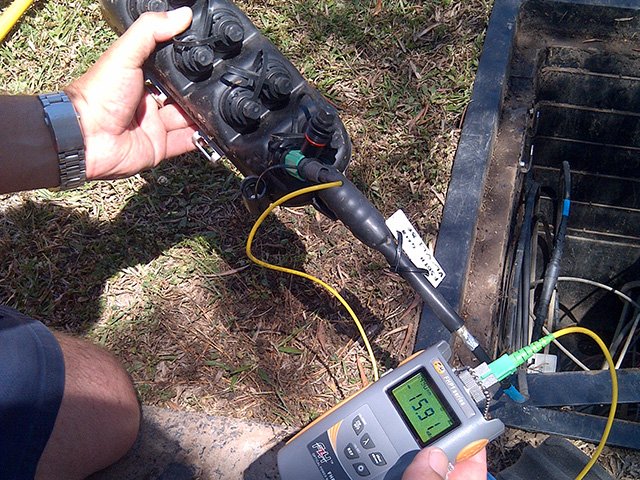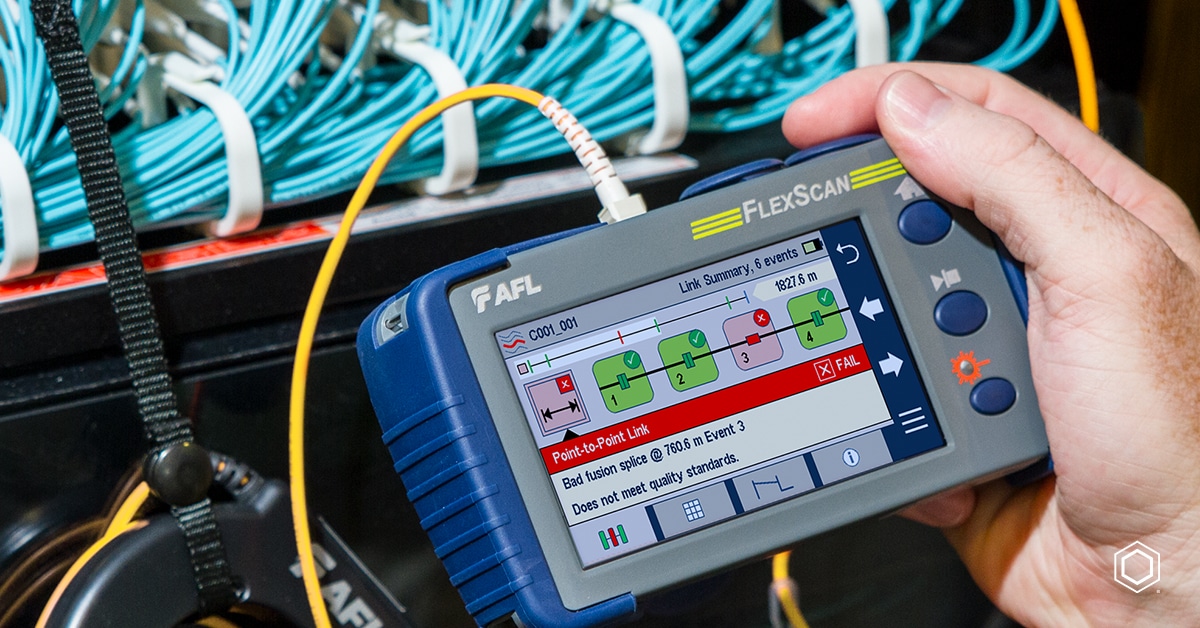Ofda is essential for accurate fibre measurement in multiple applications.
Ofda is essential for accurate fibre measurement in multiple applications.
Blog Article
Unveiling the Trick Use Optical Fibre Evaluating for Efficient Information Transmission
In the world of contemporary interaction, optical fibre screening emerges as an essential practice for optimizing information transmission. By using methods such as Optical Time Domain Name Reflectometry (OTDR) and insertion loss analyses, network drivers can successfully pinpoint and attend to concerns that may endanger signal stability. As the need for faster and much more trustworthy links proceeds to climb, the effects of these testing methods extend past prompt mistake discovery, affecting lasting network efficiency. Understanding the multifaceted applications of optical fiber screening welcomes a deeper expedition into its critical role in shaping the future of information interaction.

Value of Optical Fiber Testing
The relevance of optical fiber screening can not be overstated, as it acts as a critical component in ensuring the integrity and effectiveness of information transmission systems. In an era where high-speed communication is extremely important, any shortages in fibre optics can result in significant information loss and minimized efficiency. Extensive screening procedures are vital to verify the stability and performance of optical cables.
Checking enables the identification of flaws such as micro-bends, macrobends, and splice losses that can hinder signal high quality. Moreover, it provides insights right into the overall attenuation and bandwidth abilities of the fibre, ensuring that the network meets specific operational requirements. Regular testing not just improves system performance but also extends the life expectancy of the facilities by identifying possible concerns before they escalate into pricey failures.

Sorts Of Optical Fiber Examinations
Different sorts of optical fibre tests are carried out to ensure the performance and dependability of fibre optic networks. These tests can be categorized right into a number of crucial kinds, each offering a particular purpose in analyzing the stability of the fiber.
First, Optical Time Domain Reflectometry (OTDR) is a famous examination that determines mistakes, entwines, and ports within the fibre. By sending pulses of light and examining the mirrored signals, specialists can determine problems along the fiber's length.
2nd, insertion loss examinations examine the amount of signal loss when light travel through connectors or splices, which is crucial for keeping network efficiency.
Third, return loss examinations measure the amount of light showed back in the direction of the resource, giving understandings into the high quality of connections and prospective resources of interference.
In addition, connection examinations make certain that the fibre course is complete, enabling service technicians to confirm that the fiber is undamaged with no breaks. fibre testing equipment.
Lastly, aesthetic fault locators use noticeable light to learn this here now recognize breaks or severe bends in the fibre, assisting in fast troubleshooting. Collectively, these examinations create an extensive approach to keeping ideal efficiency in fiber optic networks.

Applications in Network Maintenance
In modern telecommunications, reliable network upkeep depends heavily on optical fibre testing to recognize and rectify concerns without delay. Routine testing ensures that the network runs at optimum performance levels, reducing downtime and enhancing user experience.
One of the key applications of optical fiber testing in upkeep is the discovery of faults, such as breaks, flexes, or inappropriate connections. Techniques like Optical Time Domain Name Reflectometry (OTDR) allow technicians to situate these problems accurately and analyze the top quality of the fibre web link. Furthermore, loss testing validates the stability of the optical course, ensuring that signal depletion stays within acceptable restrictions.
Routine upkeep testing additionally helps in preventive procedures, identifying possible problems prior to they intensify right into considerable failings. This positive strategy can save companies both time and funds. Throughout upgrades or developments, optical fibre screening makes sure that brand-new setups incorporate seamlessly with existing facilities.
Enhancing Information Transmission Reliability
Efficient network upkeep through optical fibre screening not just addresses instant concerns but likewise plays a substantial role in improving information transmission integrity. By identifying faults, determining signal loss, and analyzing use this link the overall condition of fiber optic wires, testing makes certain that potential issues are rectified prior to they escalate right into considerable disruptions.
Regular optical fiber screening, such as time-domain reflectometry (TDR) and optical time-domain reflectometry (OTDR), permits specialists to identify the precise areas of breaks, flexes, or adapter problems within the network. This aggressive strategy not just minimizes downtime but also optimizes the performance of data transmission by making sure that the pathways for signals are clear and working effectively.
In addition, screening help in validating adherence to sector criteria and requirements, which is essential for maintaining the integrity of data circulation. By making certain that each link satisfies needed thresholds for loss and high quality, organizations you can check here can bolster their self-confidence in the integrity of their information networks.
Eventually, buying extensive optical fibre screening not only improves data transmission integrity yet likewise supports the long-term functional effectiveness of communication infrastructures.
Future Fads in Fiber Screening
Arising innovations are poised to revolutionize fiber testing, leading the way for improved efficiency and precision in data transmission diagnostics (ofda). As the need for faster web and greater data transfer remains to climb, the combination of advanced devices such as expert system (AI) and artificial intelligence (ML) is established to change typical fibre screening techniques. These modern technologies will certainly enable anticipating upkeep and automated fault discovery, considerably lowering downtime and boosting network dependability
Additionally, the adoption of Net of Things (IoT) tools will assist in real-time monitoring of fiber networks, allowing for instant recognition of performance concerns. This shift in the direction of aggressive management will certainly minimize interruptions and maximize data flow.
Moreover, innovations in optical time-domain reflectometry (OTDR) and new screening standards will enhance the accuracy of dimensions, guaranteeing that information honesty is maintained throughout the transmission process. The development of 5G technology also necessitates the growth of more sophisticated fibre testing methods to sustain its high-speed needs.
Conclusion
In final thought, optical fibre testing is crucial for keeping effective data transmission within communication networks. Normal screening not only guarantees compliance with sector criteria however likewise assists in proactive upkeep, inevitably contributing to the long-term integrity and efficiency of fibre optic systems.
Report this page